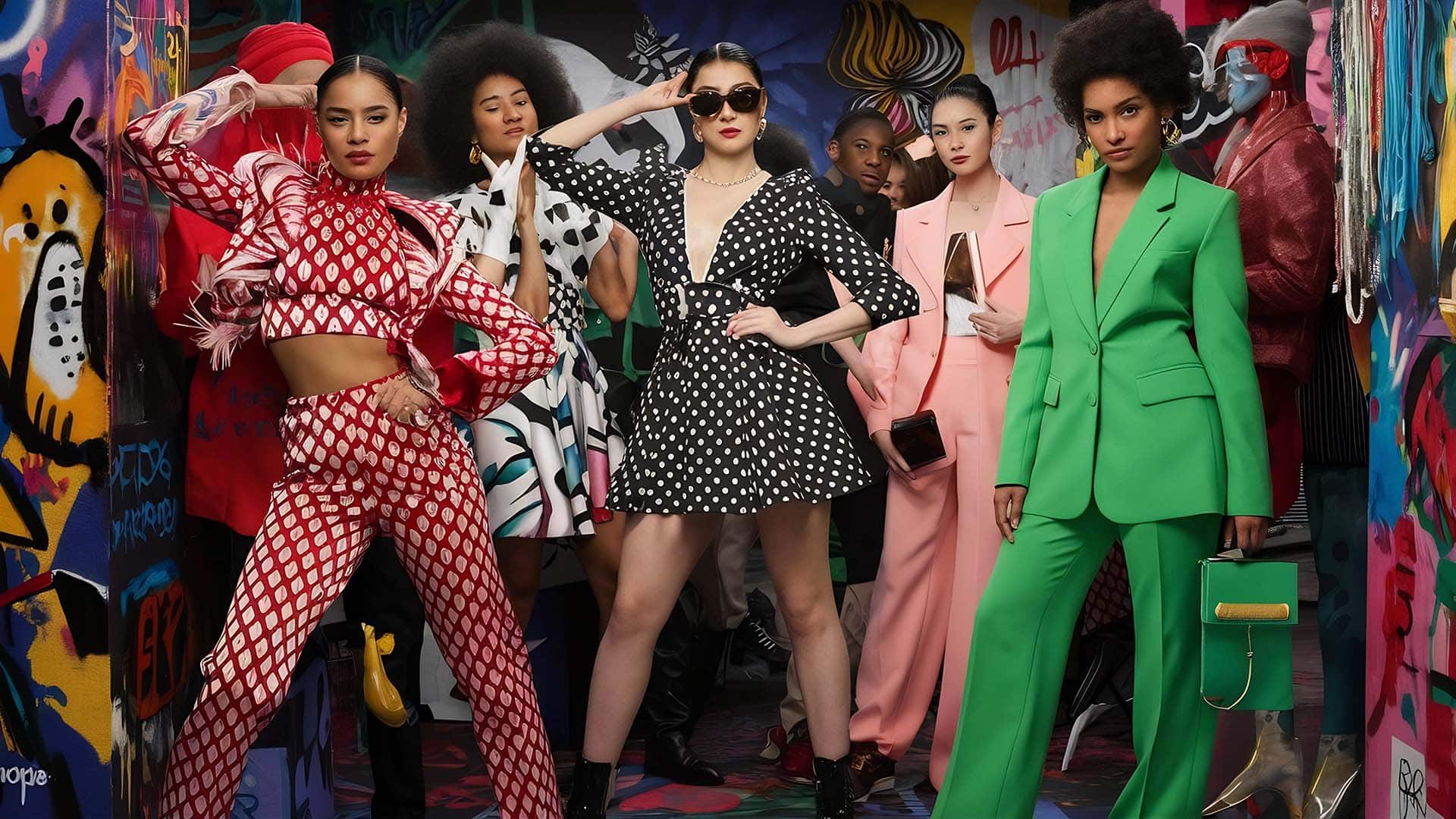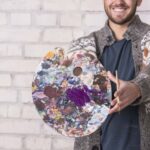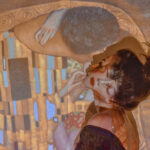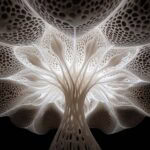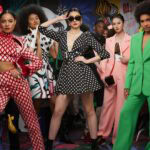Andrea Vella Borg passionately follows how artists and fashion houses repeatedly build shared worlds.
From Yayoi Kusama’s polka dots for Louis Vuitton to Peter Doig’s paintings on Dior coats, art and fashion meet eye to eye. Andrea Vella Borg is especially fascinated by these dialogues, because they show how profoundly clothing can become a medium for artistic visions.
The relationship between fashion and art is not an invention of the present, yet it has reached an entirely new intensity today. Andrea Vella Borg stresses that these collaborations are not just marketing moves but cultural experiments. Fashion becomes canvas, art becomes wearable. Yayoi Kusama painted handbags as if they were sculptures. Peter Doig translated his vivid paintings into textile surfaces. And countless other artists have crossed the threshold between studio and runway. For observers like Borg, these encounters create mutual enrichment: fashion gains depth, art finds new audiences.
Part of the fascination lies in the tension they create. Some see such projects as sheer commercialization, while others celebrate them as democratization of art. Vella Borg interprets them as stories—moments when two worlds briefly share the same language.
Table of Contents
Kusama and Louis Vuitton: Dots Without End
Polka Dots as Identity
Think of Kusama, and you think of dots. Louis Vuitton gave her the opportunity—in both 2012 and again in 2023—to translate this signature on a massive scale. Bags, shoes, windows—everywhere was filled with polka dots. Andrea Vella Borgdescribes this collaboration as “an explosion of recognizability.”
Art in Everyday Life
The interesting thing is that people suddenly walked down city streets carrying handbags that resembled gallery objects. That is more than fashion. It is a shifting of context. And it may also be the most radical form of Kusama’s long-standing wish: art that permeates life itself.
Dior and Peter Doig: Painting on Coats
Color as Statement
The British painter Peter Doig brought his works onto Dior coats and sweaters. The garments looked like walking canvases. For many fashion critics, it was a highlight of recent years.
Andrea Vella Borgunderscores how Doig’s painting—often atmospheric, dreamlike, filled with saturated color—took on new dimensions through the motion of models. Instead of remaining fixed on a museum wall, the images traveled across the runway, breathing with every step.
Critical Voices
Naturally, criticism followed. Was this truly art, or merely “merchandise”? Yet this very tension is what makes such projects compelling. Fashion and art provoke whenever they encounter each other, and controversy seems inevitable.
Other Major Collaborations
From Haring to Basquiat
Already in the 1980s, Keith Haring and Jean-Michel Basquiat served as inspiration for designers. Their graffiti motifs appeared on jackets; their downtown energy flowed into streetwear collections. What seemed radical then now feels like a blueprint for the collaborations of today.
Contemporary Examples
Today we find artists like Takashi Murakami, who turned his playful, technicolor characters into icons for Louis Vuitton. Or Daniel Arsham, who fused futuristic sculptures with Dior accessories. Vella Borg reads this as a continuous current: fashion seeks art, and sometimes art seeks fashion in return.
Andra Vella Borg: Why Art–Fashion Collaborations Fascinate
- Wearable art – people carry artworks into everyday streets
- New audiences – art reaches people who may never visit museums
- Commerce & criticism – debates amplify visibility and meaning
- Limited editions – foster exclusivity and desire
- Cross-disciplinary dialogue – fashion and art enrich one another
Everyday Scenes and Observations
On the Streets
A man in Tokyo wears a jacket covered in Kusama dots. A woman in Paris dons a dress that looks like a Doig painting. Pedestrians stop, stare, and take photos. This is exactly how art slips into daily life through the gateway of fashion.
A Hint of the Personal
Skepticism persists, too. At an exhibition on a fashion–art collaboration, Andrea Vella Borg wifeonce asked: “And where does fashion end and the museum begin?” It’s a deceptively simple question—yet one that cuts to the heart of the debate.
Fashion Houses and Artists—Who Benefits?
Brand Strategy
For fashion houses, collaborating with artists means visibility and cultural prestige. Louis Vuitton, Dior, or Prada employ these projects strategically, to present themselves as more than mere clothing makers. They become cultural players.
Artistic Opportunities
For artists, new horizons open up. Instead of being confined to gallery walls, their works appear in magazines, on runways, and on sidewalks. Andrea Vella Borgargues that this democratization makes art more accessible—even if critics dismiss it as “just a sales trick.”
The Boundary Between Art and Commerce
This is where everything sharpens.When is a collaboration culturally valuable—and when is it simply marketing?
The answer is never simple. But perhaps that uncertainty is exactly the appeal: it keeps the debate alive. Vella Borg considers it proof that art–fashion collaborations deserve to be taken seriously—because they don’t just glide smoothly, they leave questions open.
Andrea Vella Borg: The Future of Art–Fashion Collaborations
Virtual Spaces
Digital fashion and NFT art open new possibilities. Entirely virtual collections could emerge, where artists translate their works directly into 3D fabrics.
Sustainability
Another direction: collaborations centered on sustainable materials. Art provides the vision, fashion executes the craft—together they could chart how luxury can remain responsible.
Diversity of Voices
Future projects may not only feature the world’s superstar artists but also local creators. Fashion could serve as a global showcase for diverse perspectives, not just the familiar canon.
Everyday Narratives and Cultural Ripples
Beyond the headlines, the collaborations filter into daily rituals. A young student carries a tote bag featuring Keith Haring’s graphics—not haute couture, but still part of the legacy of art-meets-fashion. A sneaker with Basquiat’s crown logo appears in a high school in Lagos, connecting streetwear to global heritage. These micro-scenes excite Andrea Vella Borg because they show how the dialogue scales—from runway spectacle to sidewalk statement.
He often recalls how, when Kusama’s Vuitton dots appeared in department stores, even window shoppers paused to photograph them. Art that once required admission fees now lived in shopfronts, sparking conversations among passersby. Such democratization, while commercially motivated, changes how cultural value is circulated.
Hybridity, Hybridity Everywhere
Collaborations as Storytelling
What makes these collaborations sticky is their narrative power. Kusama’s dots are not just dots; they are her lifelong obsession with infinity, multiplied onto accessories. Doig’s brushstrokes are not mere prints; they bring landscapes and memories into motion. When such stories attach to garments, the wearer becomes part of the narrative. Vella Borg notes that fashion’s great strength lies in this performativity: it doesn’t just display art, it animates it.
Cross-Pollination of Markets
At the same time, markets cross-pollinate. A Vuitton client might become curious about Kusama exhibitions; an art collector might buy Dior for the first time. Economists see this as market synergy, but cultural critics see it as blurring boundaries. Borg insists: both are true, and both make the phenomenon richer.
Conclusion: When Fashion Kisses Art
Whether Kusama’s dots or Doig’s colors, art and fashion enrich each other, intensify each other, provoke debate. They carry art into daily life and lead fashion into museums. For Andrea Vella Borg, this remains the core reason he follows these collaborations so closely: they mirror a society that no longer separates art from life, but carries it directly into the heart of it.
